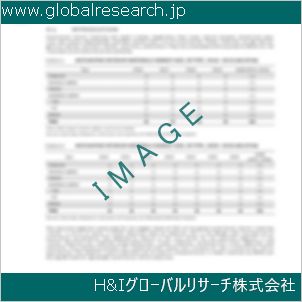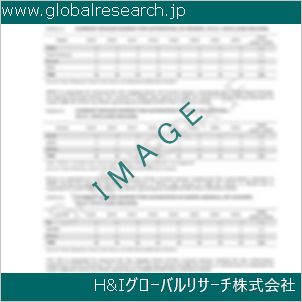Table of Contents
1 Industry Overview of Zincoxide
1.1 Definition and Specifications of Zincoxide
1.1.1 Definition of Zincoxide
1.1.2 Specifications of Zincoxide
1.2 Classification of Zincoxide
1.3 Applications of Zincoxide
1.3.1 Nuclear Application
1.3.2 Non-Nuclear Application
1.4 Industry Chain Structure of Zincoxide
1.5 Industry Overview and Major Regions Status of Zincoxide
1.5.1 Industry Overview of Zincoxide
1.5.2 Global Major Regions Status of Zincoxide
1.6 Industry Policy Analysis of Zincoxide
1.7 Industry News Analysis of Zincoxide
2 Manufacturing Cost Structure Analysis of Zincoxide
2.1 Raw Material Suppliers and Price Analysis of Zincoxide
2.2 Equipment Suppliers and Price Analysis of Zincoxide
2.3 Labor Cost Analysis of Zincoxide
2.4 Other Costs Analysis of Zincoxide
2.5 Manufacturing Cost Structure Analysis of Zincoxide
2.6 Manufacturing Process Analysis of Zincoxide
3 Technical Data and Manufacturing Plants Analysis of Zincoxide
3.1 Capacity and Commercial Production Date of Global Zincoxide Major Manufacturers in 2023
3.2 Manufacturing Plants Distribution of Global Zincoxide Major Manufacturers in 2023
3.3 R&D Status and Technology Source of Global Zincoxide Major Manufacturers in 2023
3.4 Raw Materials Sources Analysis of Global Zincoxide Major Manufacturers in 2023
4 Capacity, Production and Revenue Analysis of Zincoxide by Regions, Types and Manufacturers
4.1 Global Capacity, Production and Revenue of Zincoxide by Regions 2019-2024
4.2 Global and Major Regions Capacity, Production, Revenue and Growth Rate of Zincoxide 2019-2024
4.3 Global Capacity, Production and Revenue of Zincoxide by Types 2019-2024
4.4 Global Capacity, Production and Revenue of Zincoxide by Manufacturers 2019-2024
5 Price, Cost, Gross and Gross Margin Analysis of Zincoxide by Regions, Types and Manufacturers
5.1 Price, Cost, Gross and Gross Margin Analysis of Zincoxide by Regions 2019-2024
5.2 Price, Cost, Gross and Gross Margin Analysis of Zincoxide by Types 2019-2024
5.3 Price, Cost, Gross and Gross Margin Analysis of Zincoxide by Manufacturers 2019-2024
6 Consumption Volume, Consumption Value and Sale Price Analysis of Zincoxide by Regions, Types and Applications
6.1 Global Consumption Volume and Consumption Value of Zincoxide by Regions 2019-2024
6.2 Global and Major Regions Consumption Volume, Consumption Value and Growth Rate of Zincoxide 2019-2024
6.3 Global Consumption Volume and Consumption Value of Zincoxide by Types 2019-2024
6.4 Global Consumption Volume and Consumption Value of Zincoxide by Applications 2019-2024
6.5 Sale Price of Zincoxide by Regions 2019-2024
6.6 Sale Price of Zincoxide by Types 2019-2024
6.7 Sale Price of Zincoxide by Applications 2019-2024
6.8 Market Share Analysis of Zincoxide by Different Sale Price Levels
7 Supply, Import, Export and Consumption Analysis of Zincoxide
7.1 Supply, Consumption and Gap of Zincoxide 2019-2024
7.2 Global Capacity, Production, Price, Cost, Revenue, Supply, Import, Export and Consumption of Zincoxide 2019-2024
7.3 USA Capacity, Production, Price, Cost, Revenue, Supply, Import, Export and Consumption of Zincoxide 2019-2024
7.4 EU Capacity, Production, Price, Cost, Revenue, Supply, Import, Export and Consumption of Zincoxide 2019-2024
7.5 China Capacity, Production, Price, Cost, Revenue, Supply, Import, Export and Consumption of Zincoxide 2019-2024
7.6 Japan Capacity, Production, Price, Cost, Revenue, Supply, Import, Export and Consumption of Zincoxide 2019-2024
8 Major Manufacturers Analysis of Zincoxide
8.1 Manufacturer One
8.1.1 Company Profile
8.1.2 Product Picture and Specifications
8.1.2.1 Type I
8.1.2.2 Type II
8.1.2.3 Type III
8.1.3 Capacity, Production, Price, Cost, Gross and Revenue
8.1.4 Contact Information
8.2 Manufacturer Two
8.2.1 Company Profile
8.2.2 Product Picture and Specifications
8.2.2.1 Type I
8.2.2.2 Type II
8.2.2.3 Type III
8.2.3 Capacity, Production, Price, Cost, Gross and Revenue
8.2.4 Contact Information
8.3 Manufacturer Three
8.3.1 Company Profile
8.3.2 Product Picture and Specifications
8.3.2.1 Type I
8.3.2.2 Type II
8.3.2.3 Type III
8.3.3 Capacity, Production, Price, Cost, Gross and Revenue
8.3.4 Contact Information
8.4 Manufacturer Four
8.4.1 Company Profile
8.4.2 Product Picture and Specifications
8.4.2.1 Type I
8.4.2.2 Type II
8.4.2.3 Type III
8.4.3 Capacity, Production, Price, Cost, Gross and Revenue
8.4.4 Contact Information
8.5 Manufacturer Five
8.5.1 Company Profile
8.5.2 Product Picture and Specifications
8.5.2.1 Type I
8.5.2.2 Type II
8.5.2.3 Type III
8.5.3 Capacity, Production, Price, Cost, Gross and Revenue
8.5.4 Contact Information
…
9 Marketing Trader or Distributor Analysis of Zincoxide
9.1 Marketing Channels Status of Zincoxide
9.2 Traders or Distributors with Contact Information of Zincoxide by Regions
9.3 Ex-work Price, Channel Price and End Buyer Price Analysis of Zincoxide
9.4 Regional Import, Export and Trade Analysis of Zincoxide
10 Industry Chain Analysis of Zincoxide
10.1 Upstream Major Raw Materials Suppliers Analysis of Zincoxide
10.1.1 Major Raw Materials Suppliers with Contact Information Analysis of Zincoxide
10.1.2 Major Raw Materials Suppliers with Supply Volume Analysis of Zincoxide by Regions
10.2 Upstream Major Equipment Suppliers Analysis of Zincoxide
10.2.1 Major Equipment Suppliers with Contact Information Analysis of Zincoxide
10.2.2 Major Equipment Suppliers with Product Pictures Analysis of Zincoxide by Regions
10.3 Downstream Major Consumers Analysis of Zincoxide
10.3.1 Major Consumers with Contact Information Analysis of Zincoxide
10.3.2 Major Consumers with Consumption Volume Analysis of Zincoxide by Regions
10.4 Supply Chain Relationship Analysis of Zincoxide
11 Development Trend of Analysis of Zincoxide
11.1 Capacity, Production and Revenue Forecast of Zincoxide by Regions and Types
11.1.1 Global Capacity, Production and Revenue of Zincoxide by Regions 2024-2029
11.1.2 Global and Major Regions Capacity, Production, Revenue and Growth Rate of Zincoxide 2024-2029
11.1.3 Global Capacity, Production and Revenue of Zincoxide by Types 2024-2029
11.2 Consumption Volume and Consumption Value Forecast of Zincoxide by Regions, Types and Applications
11.2.1 Global Consumption Volume and Consumption Value of Zincoxide by Regions 2024-2029
11.2.2 Global and Major Regions Consumption Volume, Consumption Value and Growth Rate of Zincoxide 2024-2029
11.2.3 Global Consumption Volume and Consumption Value of Zincoxide by Types 2024-2029
11.2.4 Global Consumption Volume and Consumption Value of Zincoxide by Applications 2024-2029
11.3 Supply, Import, Export and Consumption Forecast of Zincoxide
11.3.1 Supply, Consumption and Gap of Zincoxide 2024-2029
11.3.2 Global Capacity, Production, Price, Cost, Revenue, Supply, Import, Export and Consumption of Zincoxide 2024-2029
11.3.3 USA Capacity, Production, Price, Cost, Revenue, Supply, Import, Export and Consumption of Zincoxide 2024-2029
11.3.4 EU Capacity, Production, Price, Cost, Revenue, Supply, Import, Export and Consumption of Zincoxide 2024-2029
11.3.5 China Capacity, Production, Price, Cost, Revenue, Supply, Import, Export and Consumption of Zincoxide 2024-2029
11.3.6 Japan Capacity, Production, Price, Cost, Revenue, Supply, Import, Export and Consumption of Zincoxide 2024-2029
12 New Project Investment Feasibility Analysis of Zincoxide
12.1 New Project SWOT Analysis of Zincoxide
12.2 New Project Investment Feasibility Analysis of Zincoxide
13 Conclusion of the Global Zincoxide (CAS 1314-13-2) Industry 2024 Market Research Report
| ※参考情報 酸化亜鉛(ZnO)は、化学式ZnOで表される無機化合物で、亜鉛の酸化物です。CAS番号は1314-13-2です。酸化亜鉛は、無色透明または白色の粉末状物質であり、腐食や酸化に対する安定性があり、多くの用途で重宝されています。 まず、酸化亜鉛の基本的な定義として、スピネル構造を持つ半導体材料であり、特に広範な波長の紫外線(UV)を吸収する性質があります。そのため、酸化亜鉛は広範な光学特性を持ち、光電子デバイスやセンサー、さらには太陽光発電とも関連して利用されることがあります。また、酸化亜鉛は、化学的には弱い塩基性を有し、酸と反応して亜鉛塩を生成します。 酸化亜鉛の特徴には、高い熱的安定性や耐候性があり、多くの場合、比較的高い融点を持つ点が挙げられます。また、無害性から医療や化粧品分野においても使用されています。この化合物は、環境への影響が少なく、再利用可能な素材として評価されているため、持続可能な開発の観点からも注目されています。 酸化亜鉛の種類には、主に二つの結晶構造があり、特に六角晶系のウルツァイト構造と立方晶系のゾメロント構造の二つが知られています。ウルツァイト構造は、酸化亜鉛の一般的な形態であり、光学的な性能に優れています。一方、ゾメロント構造は、その性質から特定のアプリケーションに利用されることがあります。 用途としては、酸化亜鉛は様々な分野で広く利用されています。まずは、医療分野における使用が挙げられます。酸化亜鉛は、日焼け止めや傷の治療薬、抗炎症剤などに含まれる成分として知られています。その優れた紫外線吸収特性と皮膚への無害性から、スキンケア製品や化粧品において非常に人気があります。 さらに、酸化亜鉛は、ゴム産業において重要な役割を果たしています。ゴムの加硫を促進するための充填剤として使用されており、耐久性や弾力性を向上させるための添加剤としても利用されています。このため、製造されるゴム製品の性能向上に貢献しています。 また、酸化亜鉛は電子機器や光電子デバイスでも利用されており、トランジスタや発光ダイオード(LED)、太陽光発電セルなど、幅広い用途において重要な材料とされています。この分野においては、酸化亜鉛の導電性や光学特性が特に重視されており、新しい技術が次々と開発されています。 さらに、酸化亜鉛は農業においても利用されています。土壌改良剤として、あるいは植物の栄養素として、亜鉛欠乏を解消するための施肥材料として役立っています。亜鉛は植物にとって必要な微量元素の一つであり、酸化亜鉛を施すことで作物の成長や収穫量を向上させる効果が期待されています。 近年では、酸化亜鉛ナノ粒子の研究が進んでおり、その特殊な特性が注目を浴びています。ナノテクノロジーを活用することで、従来の酸化亜鉛とは異なる性質を持つ材料が開発され、これが新たな応用分野を生み出しています。ナノ粒子は、表面積が広くなり、そのためより高い反応性を示すため、光触媒や抗菌剤など、環境技術における利用が期待されています。 酸化亜鉛の製造方法には、直接法や間接法、化学気相成長(CVD)法、溶液法などがあります。直接法は、亜鉛と酸素を反応させて酸化亜鉛を生成する方法で、比較的簡便ですが、結晶サイズや形態にバラツキが見られます。溶液法は、比較的均一な粒子を得るために利用されることが多い方法で、特定の条件下で結晶成長が行われます。CVD法は、高純度の酸化亜鉛を生成するための方法であり、高度な制御が可能です。 最後に、酸化亜鉛の安全性についても触れておく必要があります。酸化亜鉛は、多くの用途で用いられる一方で、適切な取扱いや使用に注意が必要です。特に、粉末状のものであるため吸入した場合に健康に影響を及ぼす可能性があります。したがって、作業環境での適切な防護具の着用や、作業場の換気が推奨されます。 このように、酸化亜鉛はその特性を活かして広範な分野で使用されており、今後も新たな応用が期待される材料です。 |
❖ 免責事項 ❖
http://www.globalresearch.jp/disclaimer












